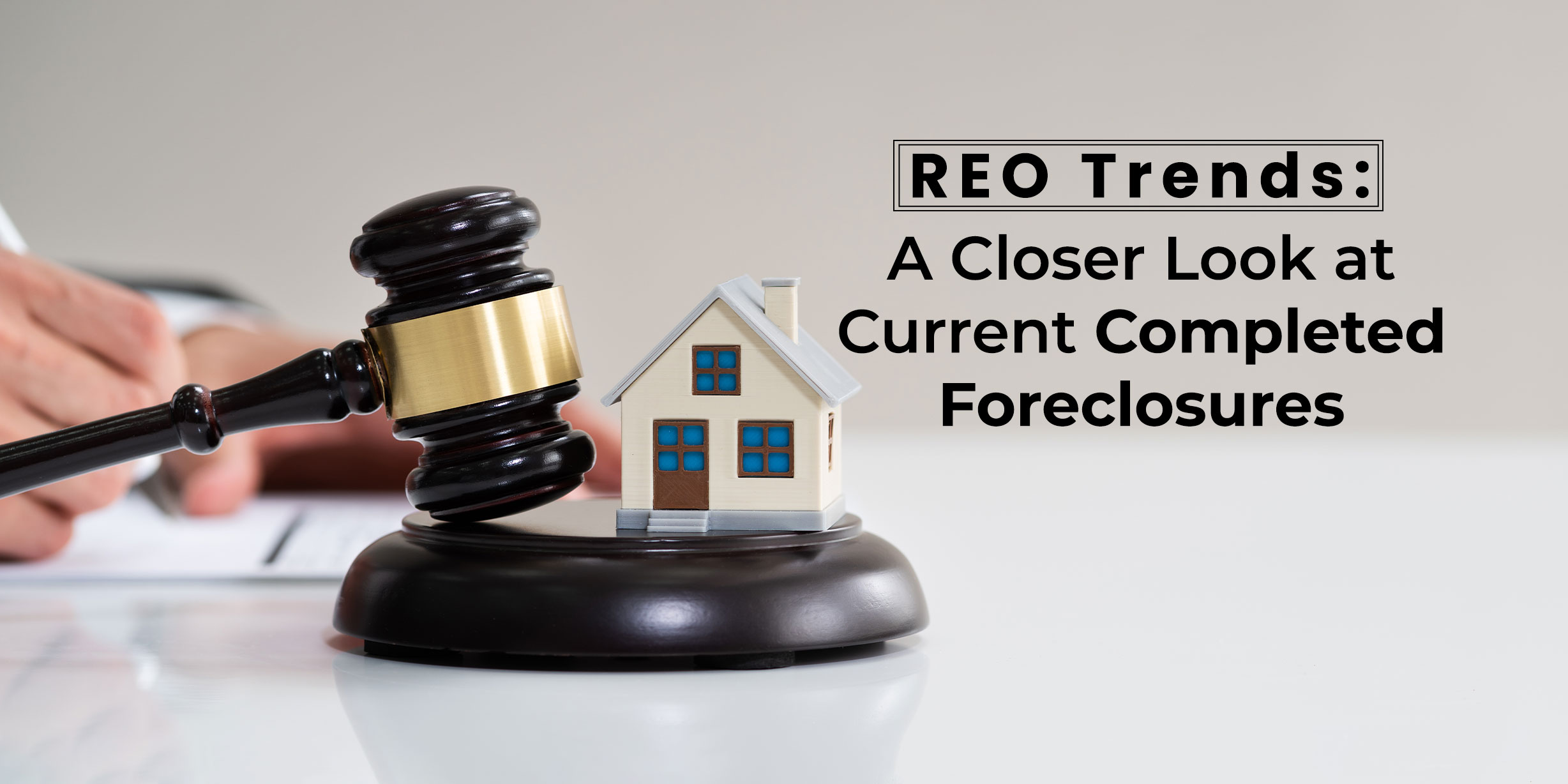Real estate-owned (REO) foreclosures are among the most significant trends in the mortgage industry, especially in a strained market. It signals an economy where inflation and other market pressures are making it difficult for borrowers to make regular payments. High foreclosure volume is often a predictor of an eventual market crash, which is why it is so important to know what is REO foreclosure and how to keep its numbers in check.
This is an especially critical concern for mortgage industry leaders in 2024, as we exit pandemic relief measures and battle a volatile post-pandemic economy on a global scale. By clearly defining what is REO foreclosure and measures to preempt foreclosure trends, mortgage businesses can get ahead of default risks and mitigate losses from properties they are forced to repossess from delinquent borrowers. `
Read More: Effects of Rising Mortgage Rates on the Housing Market
What is REO Foreclosure?
Real estate-owned foreclosures or REO foreclosures refer to properties that come into the bank’s (or lender’s) possession when the previous owner defaults on a loan secured by the property.
Apart from default scenarios, foreclosures may also happen after the death of a homeowner with a reverse mortgage. Sometimes, the heirs of a deceased borrower would rather hand over the property to the bank instead of continuing mortgage payments. This too results in bank-owned properties.
The first step for offloading such properties is to conduct a foreclosure auction. Here, lenders directly try and sell bank-owned properties to the highest bidding buyer – however, the common trend is that most foreclosures do not sell at auctions, for several reasons ranging from incomplete documentation (which leads to cancellation) to low investments in property preservation.
In case a foreclosed property fails to find a buyer, the lender then lists it as a real-estate owned or REI property to resell it on a later date. Knowing the differences between bank-owned properties and REO and what are REO foreclosures is extremely relevant in 2024, with foreclosure numbers beginning to rise
What is the REO Foreclosure Trend in 2024?
During the pandemic, between 2020 and 2021, foreclosures reduced significantly due to relief measures and economic interventions rolled out by the government. Now, we are seeing somewhat of a market correction, with a gradual rise in property foreclosures.
In 2024, there were over 32,000 foreclosure filings in the US, an 8% uptick from the previous year. Lenders repossessed 3000+ US properties through completed foreclosures in February 2024. Worryingly, 1 in every 4279 housing units had a foreclosure filing in the month of February. Among metropolitan areas, New York City ranks the highest in terms of filings.
Experts report that this uptick began in 2023, when foreclosure rates increased by 3% from the previous year. Mortgage industry leaders can expect these numbers to return to pre-pandemic levels across 2024-25 with many borrowers still grappling with the pandemic’s financial aftermath even as the national economy stabilizes slowly.
Banks can make the foreclosure process more efficient, thanks to new processes and technologies. Research shows that the average bank-owned property took 770 days to process in Q3 2023, down from 885 in Q3 2022. Does this increase in the speed and number of property foreclosures herald a market crash, similar to 2008?
Read More: Strategies for Mitigating Delinquency Risks: Lessons from Recent Trends and Patterns
Does the Rise in Bank-Owned Properties Hint at a Market Crash?
For a few quarters, industry analysts suggested that a rise in foreclosures and high mortgage rates might result in a housing recession, reversing some of the outsized price gains in US homes. While the market definitely started to slow in Q3-Q4 2022, home values have picked up since then and are currently at an all-time high. Indeed, January 2023’s median sale price of $379,100 is the highest January median on record.
Typically, when mortgage rates soar (they’re currently at around 8%), it results in foreclosures and new additions to the inventory of bank-owned properties, which injects further supply into the market, bringing down prices. Low prices attract high demand and mortgage rates increase again, continuing this cycle.
In 2024, however, property values are holding steady due to a variety of reasons – such as low housing inventory, regulatory guard rails for builders, increasing demand among new demographics like the Gen Z, and strict lending standards. Even with the rise in foreclosures, we are nowhere close to the REO foreclosure tsunami we saw in 2007-08, which means that we aren’t close to a housing market crash.
The question, however, is about the affordability of new properties and how lenders can reach the widest possible customer base at a time when limited inventory and rising prices make things unduly difficult for first-time homebuyers.
Read More: Declining Delinquency Rate: What Does it Mean for Mortgage Providers?
Partnering with the Right Mortgage Services Expert
While bank-owned property levels are not alarming, it is essential that lenders stay prepared and strengthen their capabilities for a potential crisis, were it to occur. This calls for agile, technology-driven processes with a careful optimization of fixed costs. At Nexval, we partner with America’s top mortgage lenders to streamline their operations using bespoke digital solutions and live assistance from our 1000+ team of SMEs.
Ultimately, knowing what is REO foreclosure isn’t enough; you need to take proactive measures to stave off an inordinate rise in bank-owned properties through the right interventions.
Speak with our REO experts to learn how.



